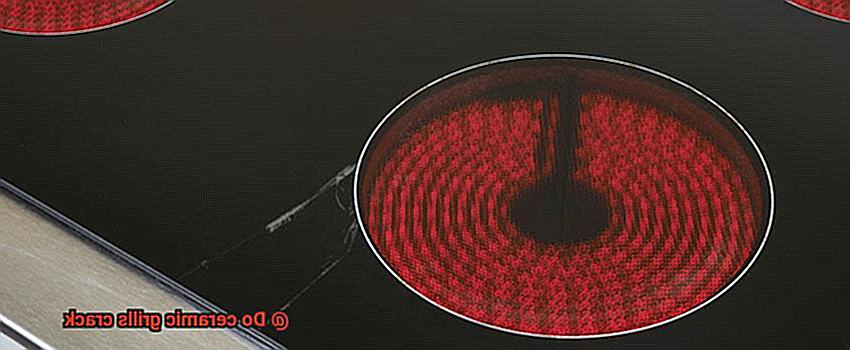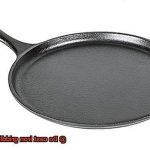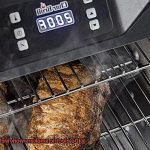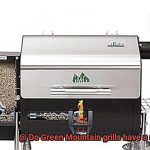Have you ever been in the middle of a backyard barbecue, flipping burgers on your trusty ceramic grill, when suddenly you hear an ominous crackling noise? If you have, don’t panic – you’re not alone. Ceramic grills have become increasingly popular in recent years due to their unique cooking abilities, but many grill enthusiasts have concerns over their durability. So, the question remains: do ceramic grills crack?
In this blog post, we’ll take a deep dive into the topic of ceramic grill cracks. We’ll explore why these grills are susceptible to damage, the types of cracks that can occur, and most importantly – how to prevent them from happening in the first place. We’ll also discuss what to do if your beloved ceramic grill does crack and whether it’s worth repairing.
Whether you’re a seasoned pitmaster or just starting out with your new ceramic grill, this post is for you. We’ll arm you with all the knowledge and tips you need to keep your grill in tip-top shape so that you can continue to cook up mouth-watering meals for years to come. Get ready to become a ceramic grill expert – no cracks about it.
Contents
What is a Ceramic Grill?
Also known as a kamado grill, this type of grill uses thick ceramic material to retain heat and evenly cook your food.
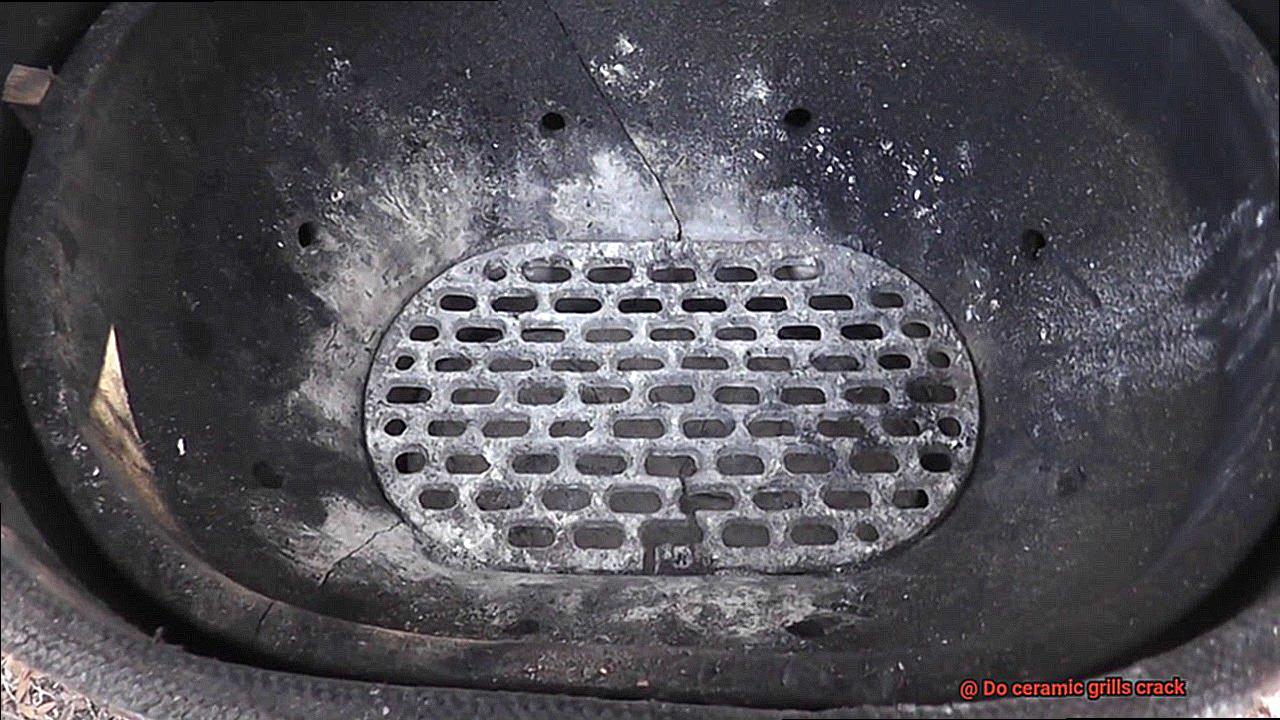
The insulating properties of the ceramic material allow for low-temperature cooking for extended periods, making it ideal for smoking or slow-cooking meats. The versatility of ceramic grills is another standout feature. With the ability to control both temperature and airflow, you can customize your cooking conditions to suit various dishes, from pizza to brisket.
Ceramic grills come in various sizes and shapes, some resembling large eggs or spheres. While they may come with a higher price tag than traditional grills, their durability and ability to produce delicious food make them a worthwhile investment for any grilling enthusiast. Proper handling and care can help reduce the risk of cracking, and investing in high-quality models from reputable manufacturers can ensure they last for years to come.
How Do Ceramic Grills Work?
It’s time to discover the magic of ceramic grills. These kamado-style grills are a must-have for anyone who is serious about grilling, smoking, or slow-cooking their food to perfection.
So, what makes ceramic grills so special? The secret lies in the unique properties of ceramic material. The thick walls of the grill trap heat inside, creating a cooking environment that is ideal for grilling, smoking, and roasting. This means that you can achieve consistent results every time you cook, regardless of what you’re making.
One of the most significant advantages of ceramic grills is their ability to retain heat. The thick ceramic walls trap heat inside, allowing it to circulate and cook food evenly. Even if you open the lid to check on your food, the grill will quickly return to its desired temperature once the lid is closed again. This makes it easy to achieve perfectly cooked meats and vegetables every time.
Another factor that sets ceramic grills apart from other types of grills is their use of natural lump charcoal as a fuel source. Unlike gas grills, which rely on propane or natural gas, ceramic grills use charcoal made from wood. This provides a unique flavor profile that can’t be replicated with other fuel sources. Plus, natural lump charcoal burns hotter and cleaner than briquettes, making it a healthier and more environmentally friendly option.
When it comes to outdoor cooking equipment, ceramic grills are an investment worth making. They may be more expensive than other types of grills, but their durability and long lifespan make them a worthwhile investment for serious grill enthusiasts. Plus, with precise temperature control and natural flavoring, you’ll be able to achieve restaurant-quality results in your own backyard.
What Causes Cracks in Ceramic Grills?
One of the most common culprits is thermal shock. This happens when the grill is exposed to sudden temperature changes, such as when using cold water to extinguish hot coals or experiencing a sudden downpour. The rapid change in temperature causes the ceramic material to expand or contract too quickly, leading to cracks or breaks.
Physical impact is another cause of cracks in ceramic grills. Dropping a heavy object on the grill or accidentally knocking it over could lead to hairline cracks that compromise its integrity and ability to retain heat effectively.
Improper maintenance and use can also contribute to the formation of cracks on a ceramic grill. Neglecting to clean it regularly or leaving it exposed to harsh weather conditions could cause hairline cracks that may eventually spread over time. Furthermore, applying too much pressure when assembling or tightening bolts can cause stress fractures that could lead to cracks in the long run.
Lastly, some ceramic grills are more prone to cracking than others due to differences in design or manufacturing processes. For instance, thinner ceramic shells or lower-quality materials used during production could increase the risk of defects that lead to cracking.
Temperature Changes and Cracking
Ceramic grills are renowned for their remarkable ability to distribute heat evenly and retain it effectively. However, their fragility means that they are vulnerable to sudden temperature changes. This is mainly because ceramic is a brittle material that expands and contracts with temperature fluctuations.
For example, pouring cold water on a hot grill may seem like a quick way to cool it down, but this can cause the ceramic to crack. To avoid this, it’s essential to allow your grill to cool down gradually or use a gentle cooling method instead.
Another factor that can damage ceramic grills is exposing them to extreme temperatures for prolonged periods. This can weaken the ceramic over time and eventually lead to cracks. Therefore, it is crucial to adhere to the manufacturer’s instructions and avoid exposing your grill to extremely high temperatures.
Ceramic grills are more susceptible to cracking than other types of grills. To prevent damage, you need to take extra care when handling and storing them. Avoid dropping or hitting your grill and always keep it in a safe location where it cannot be easily bumped or jostled.
In summary, temperature changes are one of the primary causes of ceramic grill cracking. To ensure that your grill remains in excellent condition for many years, always follow the manufacturer’s instructions and handle it with care.
With proper care, your ceramic grill will provide countless delicious outdoor meals and enjoyable moments with family and friends. Happy grilling.
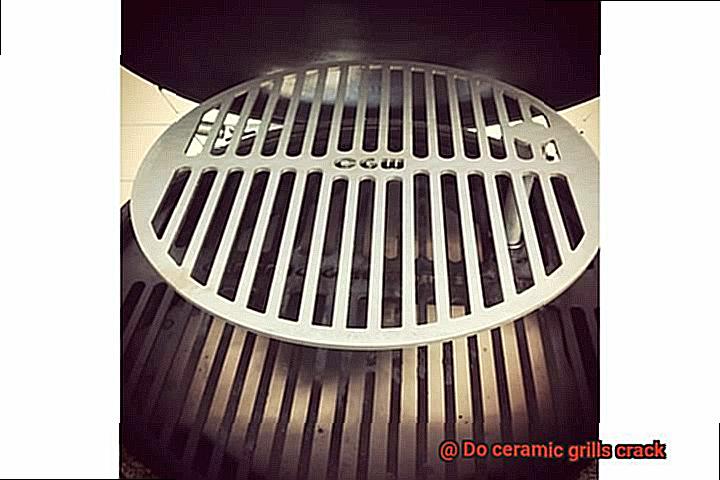
Improper Handling and Cracking
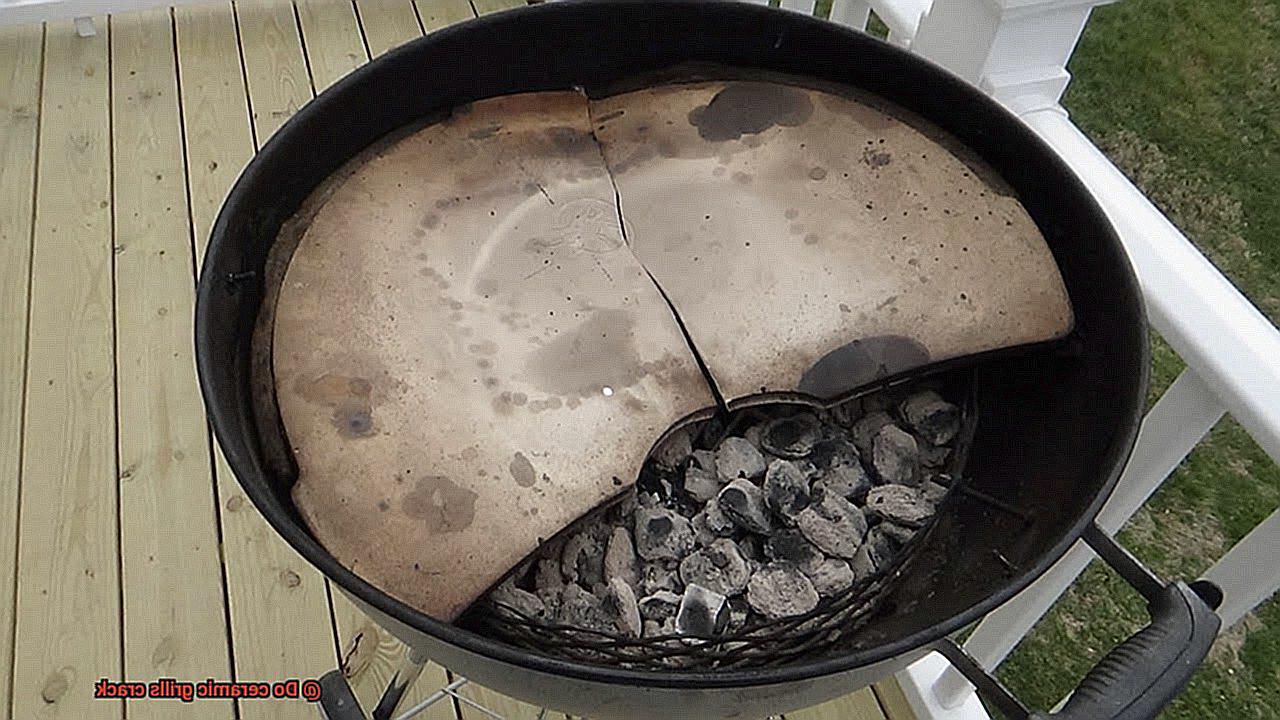
Improper handling is one of the most common reasons behind cracks in ceramic grills. Dropping or bumping your grill against hard surfaces can lead to small cracks that can eventually cause complete failure of the grill. To prevent this, always handle your grill with utmost care and set it down gently on a soft surface.
Another major cause of cracking in ceramic grills is thermal shock. Exposure to sudden changes in temperature can cause the ceramic material to expand and contract rapidly, leading to cracks. For example, if you expose a cold ceramic grill suddenly to high heat or hot water, it can crack. Similarly, if you expose a hot ceramic grill suddenly to cold water or a cold surface, it can also crack. To prevent this, allow your grill to cool down slowly before exposing it to cold water or a cold surface.
Proper maintenance is also crucial to prevent cracking in ceramic grills. Regularly cleaning your grill and inspecting it for any signs of wear or damage can help you address any issues before they become bigger problems. It’s important to keep an eye out for any cracks or damage and address them as soon as possible.
Quality Materials and Construction Techniques
When it comes to ceramic grills, the quality of materials and construction techniques used can mean the difference between a durable grill that lasts for years and a disappointing purchase that cracks or breaks after just a few uses. A high-quality ceramic grill is typically made with premium materials like high-fired ceramics that are resistant to cracking and built using proper construction techniques to ensure even heat distribution.
One of the most critical factors in preventing cracks from forming is the quality of materials used. Cheaper alternatives may use lower quality materials that don’t hold up well over time. In contrast, high-quality ceramic grills are made with premium materials that are durable and built to last. Investing in a high-quality ceramic grill may cost more upfront, but it will save you money in the long run by avoiding frequent replacements and repairs.
Another vital aspect to consider is the construction techniques used during the manufacturing process. A well-built ceramic grill should be designed with even heat distribution in mind, which means consistent cooking temperatures and reduced likelihood of thermal shock. Proper ventilation systems are also essential, as they ensure that heat is distributed evenly throughout the cooking chamber and reduce the chances of hot spots forming.
A well-ventilated ceramic grill also allows for better temperature control, which is especially important when cooking low and slow dishes like brisket or ribs. Proper airflow ensures that the heat is distributed evenly, which is crucial for achieving perfectly cooked meats every time.
Maintenance and Care to Reduce Risk of Cracking
With a few simple steps, you can keep your grill crack-free and enjoy deliciously grilled meals for years to come.
First and foremost, seasoning your grill is essential. Not only does it create a non-stick surface, but it also helps to seal the ceramic and reduce the risk of cracks. To season your grill, apply a thin layer of cooking oil to the interior surfaces and heat it up to around 300-350°F for a couple of hours. This process not only cures the ceramic but also helps prevent food from sticking to the grill.
Proper cleaning after each use is also critical in maintaining a crack-free grill. Allow the grill to cool down before gently cleaning with a soft-bristled brush or sponge. Avoid using harsh chemicals or abrasive cleaners that can damage the ceramic surface. A little TLC goes a long way.
Storing your grill in a dry and protected area when not in use is another essential factor in preventing cracks. Exposure to extreme temperatures or moisture can weaken the ceramic and lead to cracks. Consider investing in a grill cover or storing your ceramic grill indoors during inclement weather to protect it from the elements.
In addition to proper maintenance, handling your grill with care during transport and use is crucial. Dropping or bumping the grill can cause cracks or other damages. Be mindful of weight limits when adding charcoal or other accessories to your ceramic grill to avoid overloading it.
To summarize, here are some key tips for reducing the risk of cracking in your ceramic grill:
- Season your grill before using it to create a non-stick surface and seal the ceramic.
- Clean your grill after each use with a soft-bristled brush or sponge and avoid using harsh chemicals.
- Store your grill in a dry and protected area when not in use to prevent exposure to extreme temperatures or moisture.
- Handle your grill with care during transport and use to avoid cracks or other damage.
ZT372msEADg” >
Conclusion
In conclusion, ceramic grills have become a go-to choice for grill enthusiasts who want to elevate their outdoor cooking game. However, the question of whether they crack easily has been a concern for many. As we’ve explored in this blog post, there are several reasons why ceramic grills may crack, including thermal shock, physical impact, improper maintenance and use, and differences in design or manufacturing processes.
To prevent cracks from ruining your cooking experience, it’s essential to handle your grill with care during transport and use. Following the manufacturer’s instructions for temperature changes and cleaning it regularly with mild chemicals using a soft-bristled brush or sponge can also help keep your grill in top condition. Investing in high-quality models from reputable manufacturers is another way to ensure that your grill lasts for years to come.
Before you start cooking on your ceramic grill, seasoning it creates a non-stick surface that helps seal the ceramic and reduce the risk of cracks. Proper ventilation systems are also crucial for even heat distribution and better temperature control.
With proper care and handling, your ceramic grill will provide countless opportunities to create delicious outdoor meals and enjoy memorable moments with family and friends.

